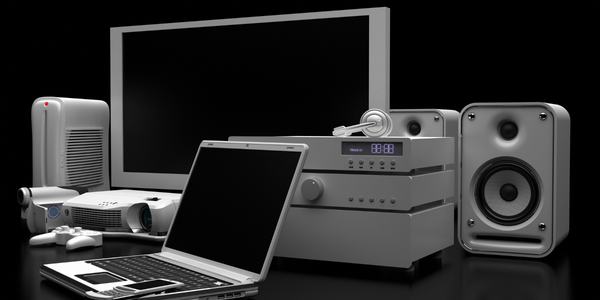Download PDF
Securing the Future with ASAP Systems’ Inventory System and Asset Tracking Solutions for Qrypt Inc.

Technology Category
- Functional Applications - Enterprise Asset Management Systems (EAM)
- Functional Applications - Inventory Management Systems
Applicable Industries
- Electronics
- National Security & Defense
Applicable Functions
- Quality Assurance
- Warehouse & Inventory Management
Use Cases
- Inventory Management
- Track & Trace of Assets
Services
- System Integration
- Training
The Challenge
Qrypt Inc., a leading data-security company, was facing a challenge in managing an increasing number of high-value assets such as desktop computers, laptops, printers, televisions, electronics testing equipment, portable media devices, and phones. With the company's growth, the need for a more efficient and accurate inventory tracking system became essential. The company was also looking to eliminate the use of outdated manual spreadsheets for inventory management. The challenge was to find a solution that could effectively manage all their assets and efficiently track inventory.
The Customer
Qrypt Inc.
About The Customer
Qrypt Inc. is an industry leader in data-security that has developed the only cryptographic solution capable of securing information indefinitely with mathematical proof as evidence. The company has a hand-selected team of seasoned leaders in engineering, physics, and cryptography to build Qrypt’s patented solution. Their mission is to become the world's security standard for the quantum age and beyond. With continued growth, Qrypt was challenged with how to manage an increased number of high-value assets and the need for a more efficient and accurate inventory tracking system.
The Solution
ASAP Systems’ Barcode-Based Inventory System and Asset Tracking Solutions was implemented as the perfect solution for Qrypt. The system, complete with handheld barcode scanners, was competitively priced and user-friendly, allowing the company to effectively manage all their assets and efficiently track inventory. Beyond the complete Asset Tracking and Inventory System, ASAP System’s customer support and training played a critical role in the implementation of the system. The training helped reduce the learning curve and the employees felt comfortable with the software within a few times of using it. The system's intuitive features, including Check out/Check-in, tracking throughout multiple locations, and the ability to receive standard, serialized and serialized with quantity Inventory items, helped the security company save time and money.
Operational Impact
Quantitative Benefit
Related Case Studies.

Case Study
Remote Temperature Monitoring of Perishable Goods Saves Money
RMONI was facing temperature monitoring challenges in a cold chain business. A cold chain must be established and maintained to ensure goods have been properly refrigerated during every step of the process, making temperature monitoring a critical business function. Manual registration practice can be very costly, labor intensive and prone to mistakes.

Case Study
Cloud Solution for Energy Management Platform-Schneider Electric
Schneider Electric required a cloud solution for its energy management platform to manage high computational operations, which were essential for catering to client requirements. As the business involves storage and analysis of huge amounts of data, the company also needed a convenient and scalable storage solution to facilitate operations efficiently.

Case Study
Leveraging the IoT to Gain a Competitive Edge in International Competition
Many large manufacturers in and outside Japan are competing for larger market share in the same space, expecting a growing demand for projectors in the areas of entertainment, which requires glamor and strong visual performance as well as digital signage that can attract people’s attention. “It is becoming more and more difficult to differentiate ourselves with stand-alone hardware products,” says Kazuyuki Kitagawa, Director of Service & Support at Panasonic AVC Networks. “In order for Panasonic to grow market share and overall business, it is essential for us to develop solutions that deliver significant added value.” Panasonic believes projection failure and quality deterioration should never happen. This is what and has driven them to make their projectors IoT-enabled. More specifically, Panasonic has developed a system that collects data from projectors, visualizes detailed operational statuses, and predicts issues and address them before failure occurs. Their projectors are embedded with a variety of sensors that measure power supply, voltage, video input/ output signals, intake/exhaust air temperatures, cooling fan operations, and light bulb operating time. These sensors have been used to make the projector more intelligent, automatically suspending operation when the temperature rises excessively, and automatically switching light bulbs. Although this was a great first step, Panasonic projectors were still not equipped with any capability to send the data over a network.








